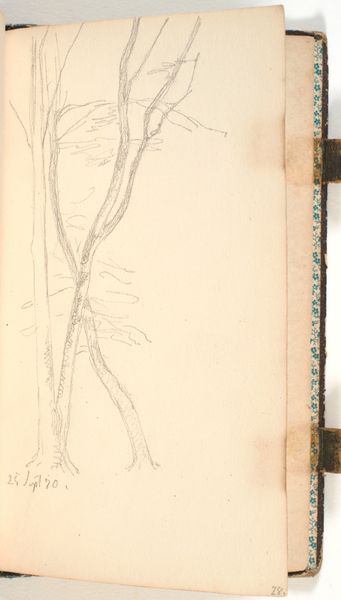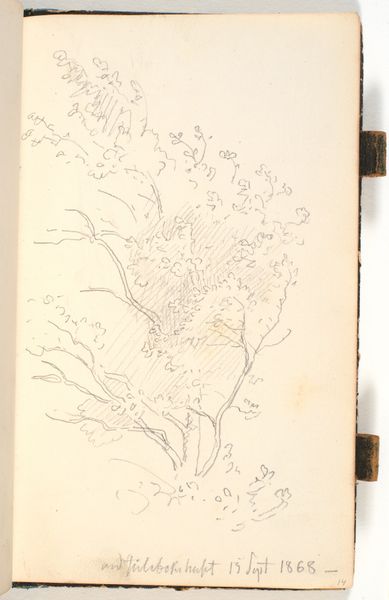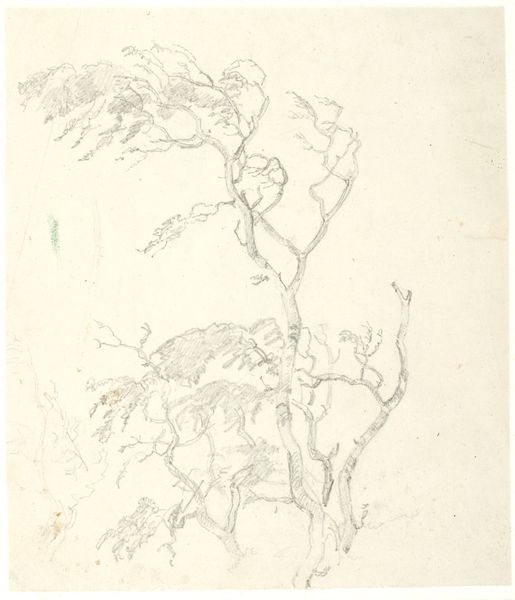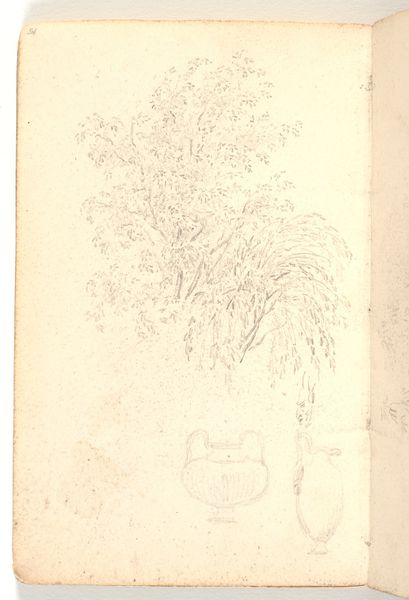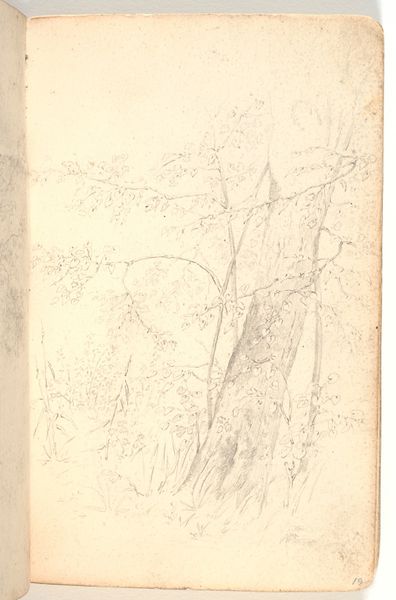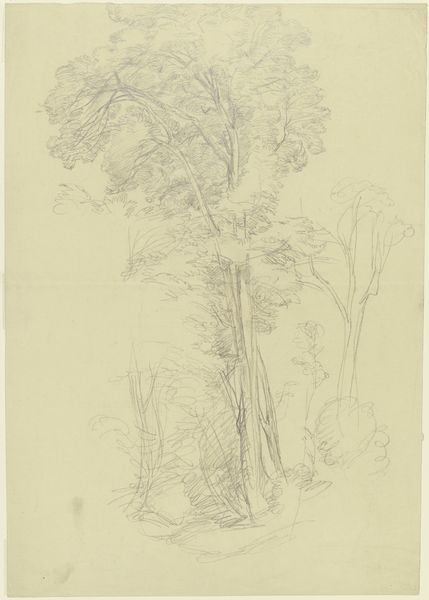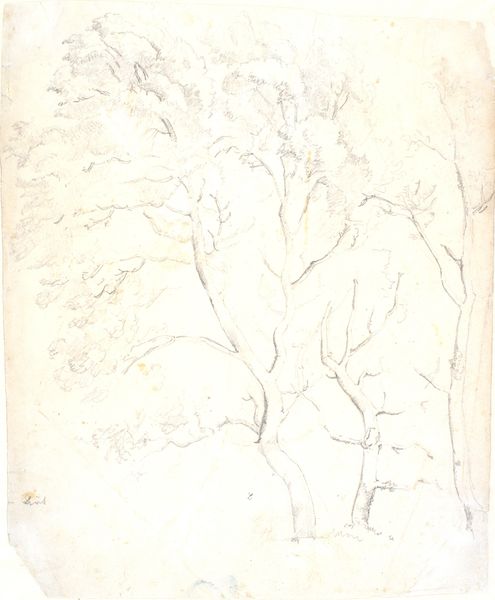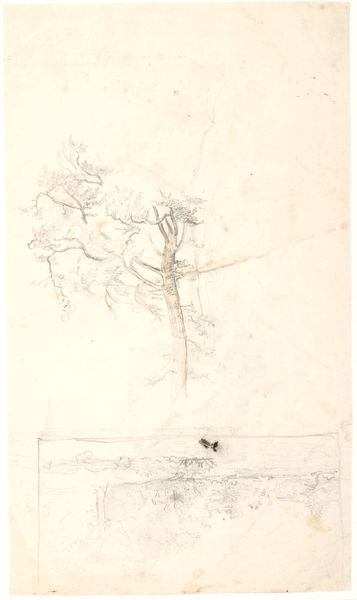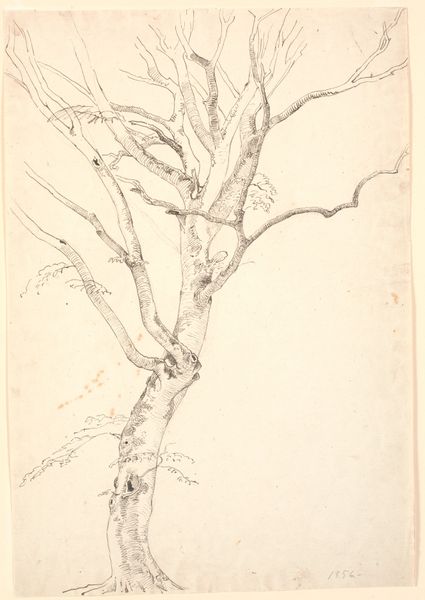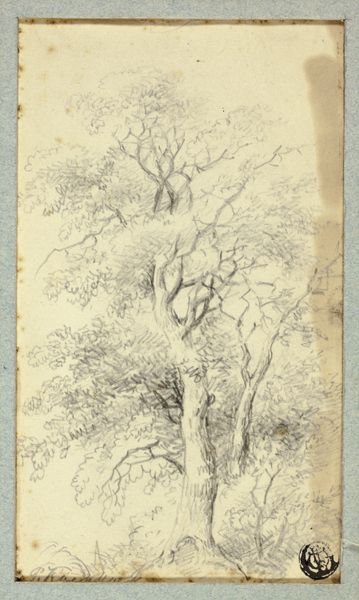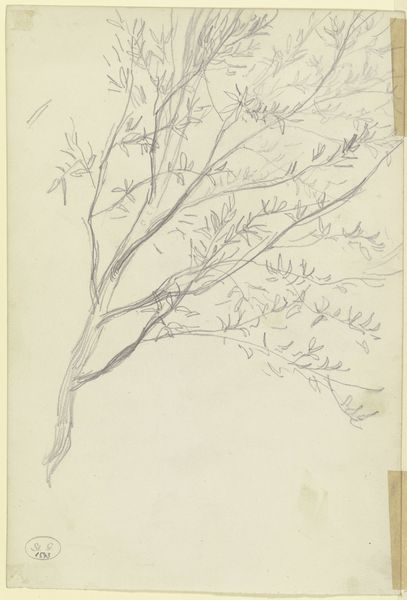
drawing, pencil
#
drawing
#
landscape
#
pencil
#
realism
Dimensions: 215 mm (height) x 130 mm (width) (bladmaal)
Curator: Here we have "A large tree, possibly an oak," a pencil drawing by P.C. Skovgaard, created in 1872. It’s part of the collection at the SMK, the National Gallery of Denmark. Editor: Immediately striking – a delicate, almost ghostly rendering of this solitary tree. There's a real sensitivity in the use of pencil, capturing the ephemeral quality of light. It also looks like it was quickly done. Curator: Absolutely. Skovgaard was a key figure in the Danish Golden Age, deeply involved in shaping a national artistic identity through landscape painting. He was very concerned about conveying "truth". The drawing, made outdoors "en plein air" speaks to the Romantic movement’s connection to nature, the natural landscape as both a literal and spiritual space for creativity. Editor: You can almost feel him there. I think there’s such an immediacy with sketches – seeing the marks and the process so bare. It foregrounds his labour, the materiality of pencil on paper to create a "realistic" effect. There’s also the material context - consider how industrial pencil production at this time shaped this newfound freedom to produce landscape works affordably. Curator: That is true and the proliferation of readily-available and cheap materials reshaped not only how but who made art. I also feel this piece also conveys a certain melancholy. The lone tree, while majestic, seems vulnerable, exposed against the vast sky. It's not just about realism, but the emotion invested in the landscape. It may resonate in Denmark and beyond, but certainly expresses particular concern with representing specific, "local" nature, the kind found near Copenhagen. Editor: I’m glad that you say "vulnerable", and I see the sentiment, but I see strength too – that texture in the canopy shows its power, its resistance to external pressure – material presence resisting against…nothing, just paper. It is lovely how humble the format of sketchbook drawing democratized what was formerly monumental production within painting traditions. Curator: Indeed. Skovgaard captured a nation’s soul, perhaps by focusing his energy on paper rather than always oil on canvas, thereby contributing in its own way to a visual rhetoric of nature accessible to more and more people. Editor: Agreed, and in so doing the accessibility reveals, and is fundamentally part of, what might constitute a national character, forged with lead on paper.
Comments
No comments
Be the first to comment and join the conversation on the ultimate creative platform.

